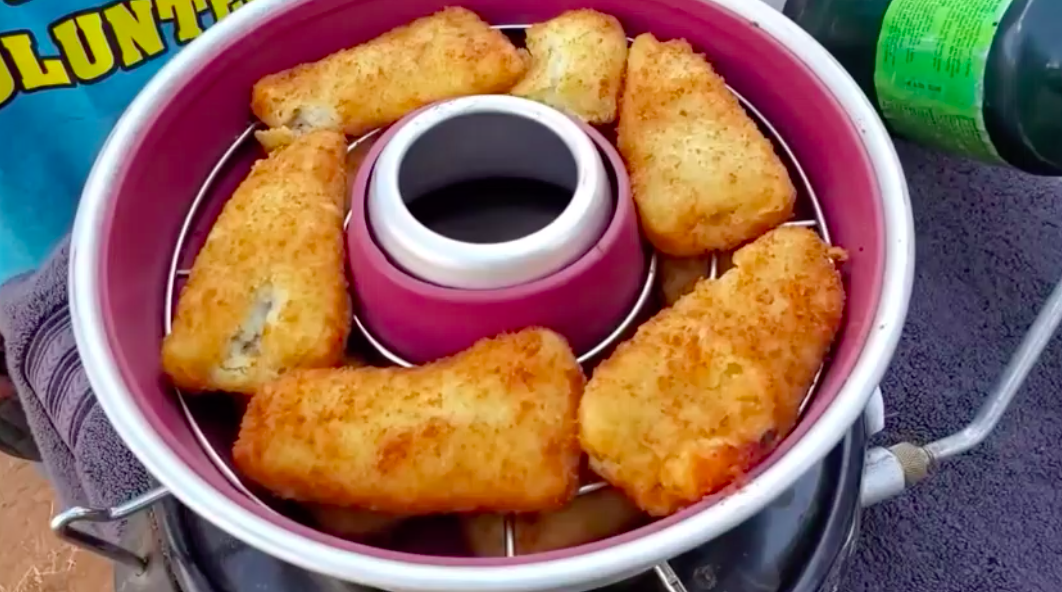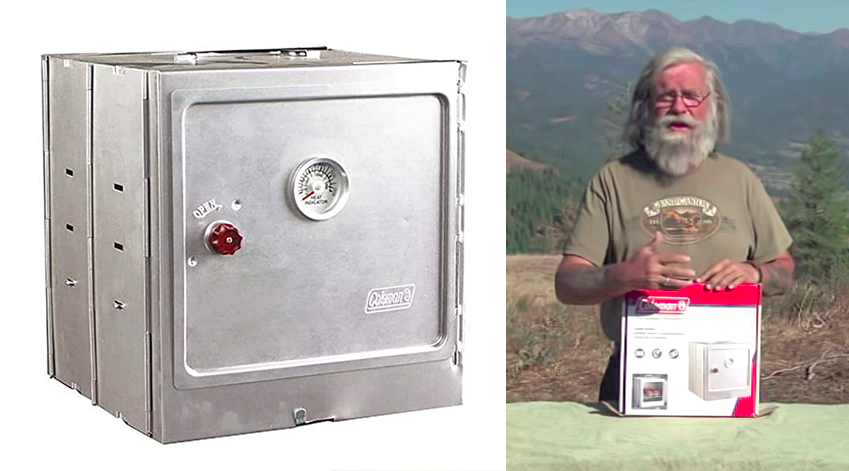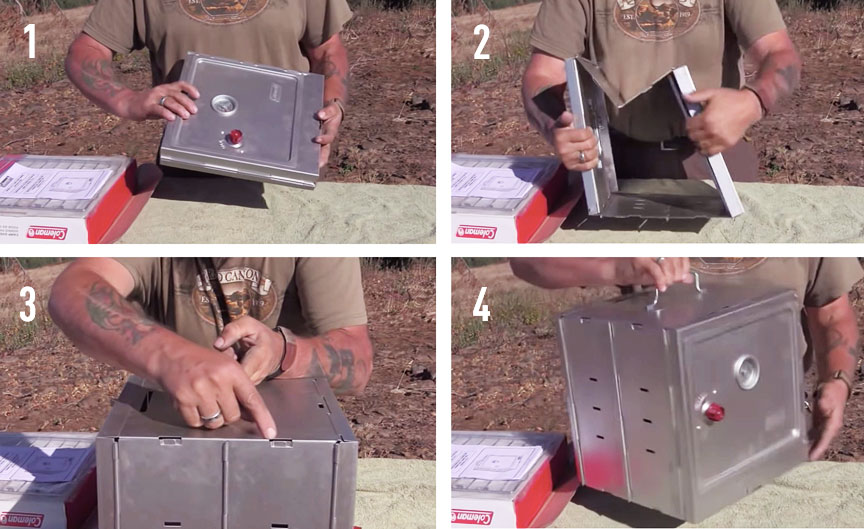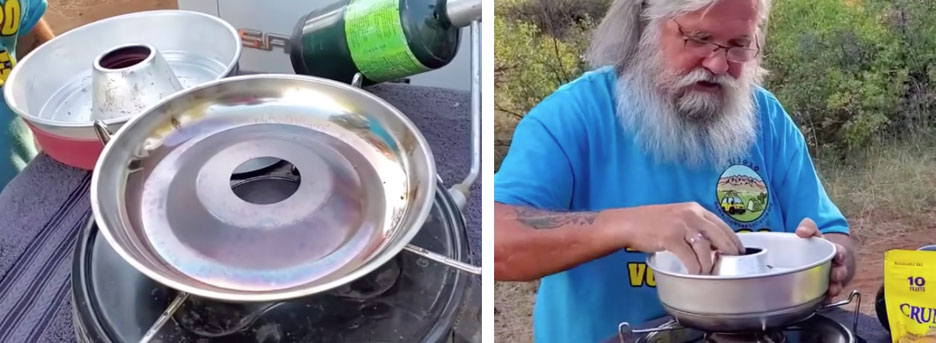How Can We Help?
Testing stovetop ovens

As the old Pillsbury jingle used to tell us, nothin’ says lovin’ like something from the oven. Mmmm, breads, cakes, roasts, pizza, fish sticks (I love fish sticks)… But if you’re living in something other than an RV, travel trailer or truck camper you probably don’t have an oven. You’re likely to have a stove, though. So we tested two types of stovetop ovens.

COLEMAN CAMP OVEN
The first one is the good old Coleman Camp Oven. It has been around forever. It’s basically a folding metal box with a door, rack and thermometer. Unfolding it, setting it up, and making sure all the tabs are mated to all the slots requires some dexterity and concentration.

The oven’s adjustable rack is held in place by tabs that fit into slots in the oven walls. It’s not the most secure design. The tabs can slip out if the oven is bumped or the thing being baked is heavy. One fix is to take pieces of wire coat hanger wider than the oven and run them from one side to the other using the same slots. Then place the rack on top of them.

Oddly, it’s tricky getting it to sit securely on the classic Coleman single-burner propane stove many of us use. You’d think Coleman products would work well together. The oven is much more stable sitting on the rack of a two-burner stove.

Once it’s ready to go up, the Camp Oven is easy to use. Fire up the stove, watch the thermometer as you preheat the oven, then place your brownies, lasagna or fish sticks (I love fish sticks) inside. The oven might never get as hot as a recipe calls for, so you’ll need to adjust cooking times, checking progress periodically.
The fish sticks I baked for the test turned out perfectly. Brown and crispy outside, moist inside.

OMNIA STOVETOP OVEN
The other oven in the test is made by Omnia. It looks like some kind of jello mold or the kit for an alien spacecraft.
The first part is a dished ring that sits on the stove burner. It provides a gap so the rest of the stove isn’t in direct contact with the flame as well as providing wider heat distribution.

The main part has a central chimney that brings hot air into the top. And the domed lid helps circulate the heat.
There’s an optional silicone liner that can be used just like a pan, which is good since conventional oven pans won’t fit. For muffin and cupcake lovers, there’s a circular silicone muffin pan available. There’s also a rack. And foil inserts you could bake in and then use as storage containers. However, there is no thermometer. You’d need to source that elsewhere.

The oven’s shape means you might need to get creative with some foods. Fortunately, fish sticks (did I mention I love fish sticks?) fit easily. I placed one layer of them, then inserted the rack and added another layer.

I didn’t have a separate thermometer to tell me how hot the oven got, so I had to make quick checks of the progress. I ended up baking for about twice as long as the suggested time on the package. The bottom layer came out a little crispier, probably because it was closer to the burner. Overall, the results were more than satisfactory.
CONCLUSIONS
I had originally thought stovetop ovens could do double duty for me, heating my van while baking. But that didn’t work out. It gets way too warm with the stove burning for all that cooking time. And the Camp Oven was too bulky for my space, and unstable.

My movements in the van could make the oven slide on the stove—or off of it. The Omnia was as stable as a large pot, but both really should be used outside.
The Omnia doesn’t pack as compactly as the Camp Oven, but I think it was a better user experience. However, the Camp Oven allows you to use conventional bakeware. It also costs less.
